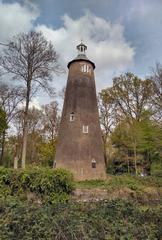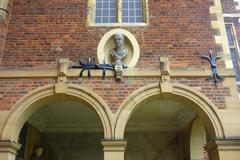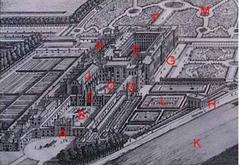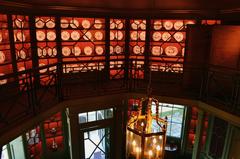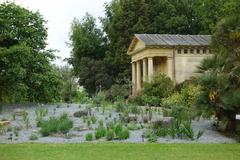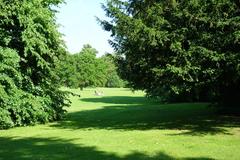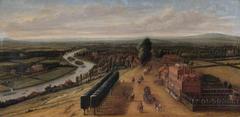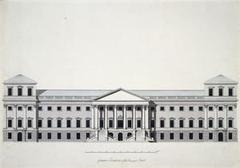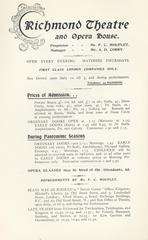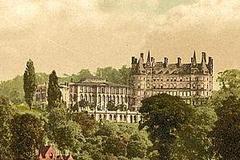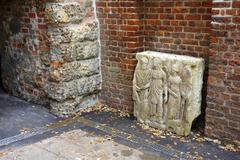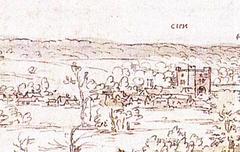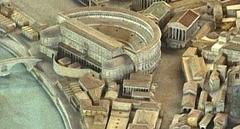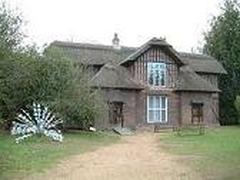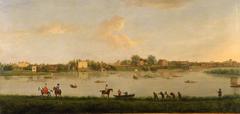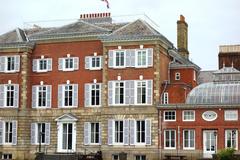King Henry VIII’s Mound Richmond: Visiting Hours, Tickets, and Historical Sites Guide
Date: 14/06/2025
Introduction
King Henry VIII’s Mound in Richmond Park, southwest London, is a unique blend of ancient archaeology, royal legend, and natural beauty. As one of London’s rare surviving prehistoric barrows and a vantage point steeped in centuries of myth, it attracts history enthusiasts and casual visitors alike. Today, the mound is celebrated not only for its archaeological value and Tudor associations but also for its breathtaking, protected sightline to St Paul’s Cathedral—linking London’s ancient past with its iconic skyline.
This comprehensive guide provides detailed information on visiting hours, tickets, accessibility, nearby attractions, historical background, and practical tips to help you make the most of your visit to King Henry VIII’s Mound (Historic England; BBC News; Royal Parks; London x London).
Table of Contents
- Introduction
- Historical Background
- Visiting King Henry VIII’s Mound
- What to See and Do
- Nearby Attractions
- Travel Tips and Visitor Etiquette
- Frequently Asked Questions (FAQ)
- Visuals and Media
- Conclusion and Call to Action
- References
Historical Background
Prehistoric Origins and Archaeological Significance
King Henry VIII’s Mound is a prehistoric round barrow dating from the Late Neolithic to the Late Bronze Age (circa 2400–1500 BCE). These ancient mounds were constructed as funerary monuments and ceremonial sites, marking the landscape long before the arrival of Tudor royalty. Its survival within urban London is exceptional: most similar barrows have been lost to development (Historic England; BBC News; ianVisits).
In 2020, the mound was legally designated a scheduled monument, ensuring its preservation and recognition as a site of national heritage importance.
Royal Connections and Myths
The name “King Henry VIII’s Mound” is rooted in legend rather than historical fact. Tradition holds that Henry VIII stood atop the mound on 19 May 1536, waiting for a signal from the Tower of London confirming Anne Boleyn’s execution so he could marry Jane Seymour. However, historical records indicate Henry was elsewhere at the time, and the Tower is not visible from the mound (BBC News; ianVisits). The earliest documented use of the mound as a royal hunting stand appears in 17th-century records, when it was called “King’s Standinge” and used as a vantage point for royal hunts, particularly under Charles I (Royal Parks).
Protected Sightline and Modern Conservation
One of the mound’s most celebrated features is its protected sightline to St Paul’s Cathedral, some 10–12 miles away in central London. This view is safeguarded by planning laws, and the park’s staff regularly clear the corridor of trees to maintain this iconic panorama (London x London; MyLondon). A public telescope atop the mound enables visitors to appreciate the distant dome, emphasizing the site’s unique connection between past and present.
Visiting King Henry VIII’s Mound
Location and Getting There
King Henry VIII’s Mound is situated in the gardens of Pembroke Lodge in the northwest corner of Richmond Park. The nearest major roads are the A307 (Petersham Road) and Queen’s Road. Richmond and St Margaret’s train stations are the closest, with frequent services from central London. Bus routes 65 and 371 stop nearby, providing convenient access (GetSurrey).
- Address: Richmond Park, Richmond, London TW10 5HS, UK
- Nearest landmark: Pembroke Lodge
Visiting Hours and Tickets
- Pedestrian access: 24 hours a day (except during annual deer culls in November and February, when access may be limited)
- Vehicle access: 7:00 am to dusk (typically 9:00 pm in summer, earlier in winter)
- Entry fee: Free; no tickets or advance booking required (Royal Parks)
Accessibility and Facilities
- Paths: Well-maintained, suitable for wheelchairs and strollers up to the mound, though the final ascent may require assistance.
- Parking: Several car parks are available, with Pembroke Lodge car park being the most convenient.
- Toilets and café: Located at Pembroke Lodge, which offers refreshments, indoor/outdoor seating, and accessible facilities.
- Signage and viewing platform: The mound features a metal viewing portal and a public telescope for enhanced viewing of St Paul’s Cathedral.
Best Times to Visit
- Early mornings: Peaceful atmosphere, active wildlife (especially deer)
- Clear days: Best for viewing the protected sightline to St Paul’s Cathedral
- Seasonal highlights: Spring blooms in Isabella Plantation, autumn foliage, atmospheric winter mists (Luxe on Less London)
What to See and Do
- Enjoy the panoramic view: Use the telescope to spot St Paul’s Cathedral through the tree-framed corridor.
- Explore Pembroke Lodge gardens: Adjacent historic house, gardens, and café with Thames Valley views.
- Experience wildlife: Richmond Park is home to herds of red and fallow deer, diverse birdlife, and ancient trees.
- Photography: The vista and park landscapes provide superb opportunities, especially during sunrise or sunset.
Nearby Attractions
- Isabella Plantation: Woodland garden renowned for spring azaleas and rhododendrons.
- Pen Ponds: Picturesque lakes ideal for walking and birdwatching.
- Richmond town: Riverside walks, historic theatres, Kew Gardens, and more.
- Poet’s Corner: Tranquil spot dedicated to poet James Thomson.
Travel Tips and Visitor Etiquette
- Respect wildlife: Do not approach or feed deer; keep dogs on leads during birthing (May–July) and rutting (September–November) seasons (Royal Parks).
- Stay on marked paths: To protect sensitive habitats and archaeological features.
- Carry essentials: Binoculars, camera, picnic supplies, weather-appropriate clothing, and water.
- Accessibility: The site is family-friendly and suitable for groups; benches and picnic spots are available.
- Leave no trace: Use bins provided or take litter with you.
Frequently Asked Questions (FAQ)
Q: Is there an entry fee or tickets required?
A: No, entry to Richmond Park and King Henry VIII’s Mound is free.
Q: What are the opening hours for the mound?
A: Open to pedestrians 24 hours a day, except during deer culling. Vehicle access is from 7:00 am to dusk.
Q: Is the mound wheelchair accessible?
A: Yes, up to the viewing area; some assistance may be needed for the final ascent.
Q: Are dogs allowed?
A: Yes, but must be on leads during sensitive wildlife periods.
Q: Are guided tours available?
A: Occasional guided walks and events are offered—check the Royal Parks website for details.
Q: Can I take photographs?
A: Absolutely—bring a camera or binoculars to capture the protected view and wildlife.
Visuals and Media
To enhance your visit, view high-quality images and maps of King Henry VIII’s Mound and its sightline to St Paul’s Cathedral on the Royal Parks website.
Alt text suggestions:
- “Panoramic view from King Henry VIII’s Mound toward St Paul’s Cathedral”
- “Historic round barrow in Richmond Park with visitor telescope”
Conclusion and Call to Action
King Henry VIII’s Mound is a remarkable destination where ancient history, royal legend, and London’s natural splendor converge. Its free access, unique sightline, and tranquil setting make it a must-visit for anyone exploring Richmond or London’s historic sites.
Before you go, check the Royal Parks official website for up-to-date visitor information and special events.
Download the Audiala app for guided audio tours and exclusive content, and follow us on social media for travel tips and inspiration. Plan your visit today and discover the timeless allure of King Henry VIII’s Mound.
References
- Ancient Burial Mounds in Richmond Park Protected (Historic England)
- King Henry VIII’s Mound: History, Viewing Hours & Tickets in Richmond Park (BBC News)
- King Henry VIII’s Mound Protection and History (ianVisits)
- King Henry VIII’s Mound and Richmond Park History (London x London)
- Protected Views of London Skyline (MyLondon)
- Richmond Park Visitor Information (Royal Parks)
- Richmond Park Travel Guide: Top 10 Must Visit Tourist Places (Tourist Places Guide)
- Visiting King Henry VIII’s Mound: Practical Tips and Accessibility (GetSurrey)
- Luxe on Less London – Richmond Park (Luxe on Less London)
